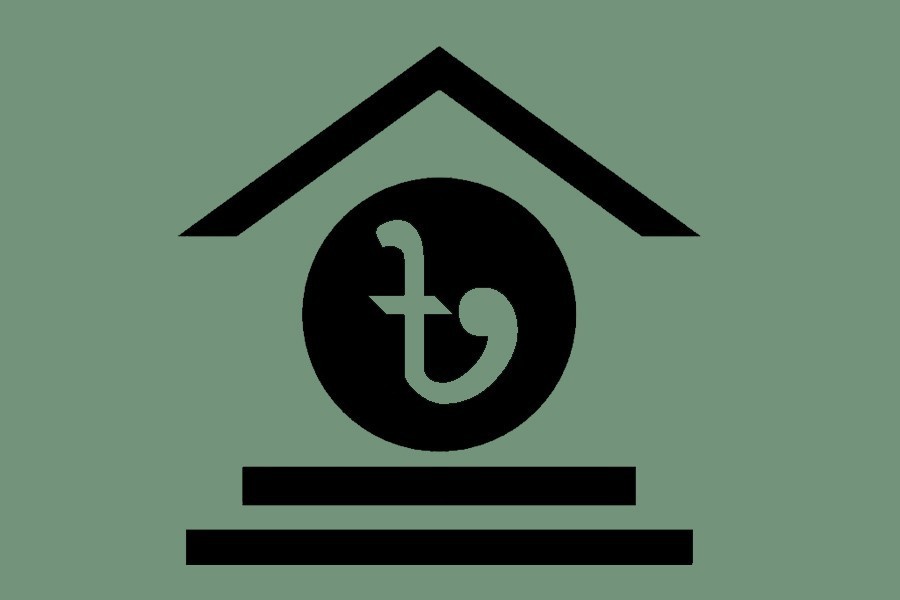It is a piece of good news for the banks that savers have again started coming back to their fold. The return means a lot to the banks which are now experiencing a difficult time as far as supply of liquidity is concerned.
The savers' change of mind is not without reasons. The latest change of rules requiring production of national identity cards and electronic tax identification numbers by the buyers of the savings tools is one prime reason. The other is the hike in banks' deposit rates, particularly in the case of term deposits.
Some banks are reportedly offering now rates as high as 11.50 per cent for fixed deposit receipts (FDRs). That is, in fact, more than the yield rates offered by the government savings tools. It could be that the banks offering such high rates are too desperate to lure time deposits. Some relatively strong banks, however, are lately offering 10.50 per cent for FDRs of year-long tenure. Even six months back, the rates used to be between 6.0 and 6.50 per cent for such deposits.
Most banks, lately, are putting in extra efforts to mobilise greater volume of funds, even at costs higher than before. The management of banks is pushing their employees hard to get higher volume of funds from depositors of all sorts.
Yet bankers, according to a report published in this paper, are not comfortable with the situation. They fear that the liquidity situation might worsen further in the coming days, leading to further hike in deposit rates.
The reverse trend in deposit rates, however, goes against the government's goal of disbursing credit at single digit interest rate to help boost investment in the country.
It is quite natural for the government to expect the banks to make available loans at affordable rates of interest, particularly to operators in the real sectors of the economy. The availability of funds at lower rates of interest does help businesses to be competitive in the market, both at home and abroad.
But the prevailing situation in the financial market has given rise to a large gap between the government's expectation and the banks' affordability as far as lending rates are concerned.
The banking industry is going through a bad patch, primarily because of the rising volume of non-performing loans. The profitability of most banks is now experiencing severe erosion. A number of loan scams have also dented the industry's image.
So, banks are not in a position to lend at single digit interest rates under the given circumstances. It is nothing but market forces determine both lending and deposit rates of banks. The days of central bank deciding both lending and deposit rates for banks are no more there. The banks themselves do decide their rates in a free market economy.
That the government high-ups are unhappy over the issue of lending rates can be easily noticed. They have genuine reasons to be so. A section of people in the private commercial banks had managed some tax concessions for banks assuring the top policymakers of bringing down the lending rates to a single digit. That was not fair on their part.
The government wanted the lending rates down to a single digit as the businesses said it was necessary to reduce their cost of doing business. Moreover, the affordable lending rates do help spur private investment flow in the economy.
Then again, the demand from banks to reduce the corporate tax rate is a genuine one. For the corporate tax rate in Bangladesh is one of the highest in the world.
Prior to asking banks through the central bank to cut lending rate to a single digit, the government should have seen whether the banks will be able to reduce lending rates under the prevailing circumstances.
More than anything else, the need of the moment is strengthening the financial sector. The sector is beset with too many problems, including the huge burden of soured loans.
The policymakers concerned do often recognise in public the weaknesses of the banking industry and underscore the need for addressing those. But some policy measures, approved by them later, are found to have all the potential of worsening the situation in the industry. The special facilities offered to the loan defaulters by the Bangladesh Bank recently could be cited as one of such misdirected actions.
The issue has been taken to higher court that has stayed the special facilities for the time being.
There is no denying that the economy badly needs low-interest bearing finance to help investment grow. For quite some time, the inflow of private investment has been at its low ebb. It has to be given a boost. However, it is not just low-cost finance some other factors do also play an important role in luring private investment. The government, while seeking low-cost financing, should also see to it that those factors are conducive enough to investment growth.
But at the top of everything, the government and the central bank should work hand in hand to address on a priority basis the issues that have been weakening the banking industry. Once that is done, it would not be difficult for the banks to offer loans at single digit rates of interest.


